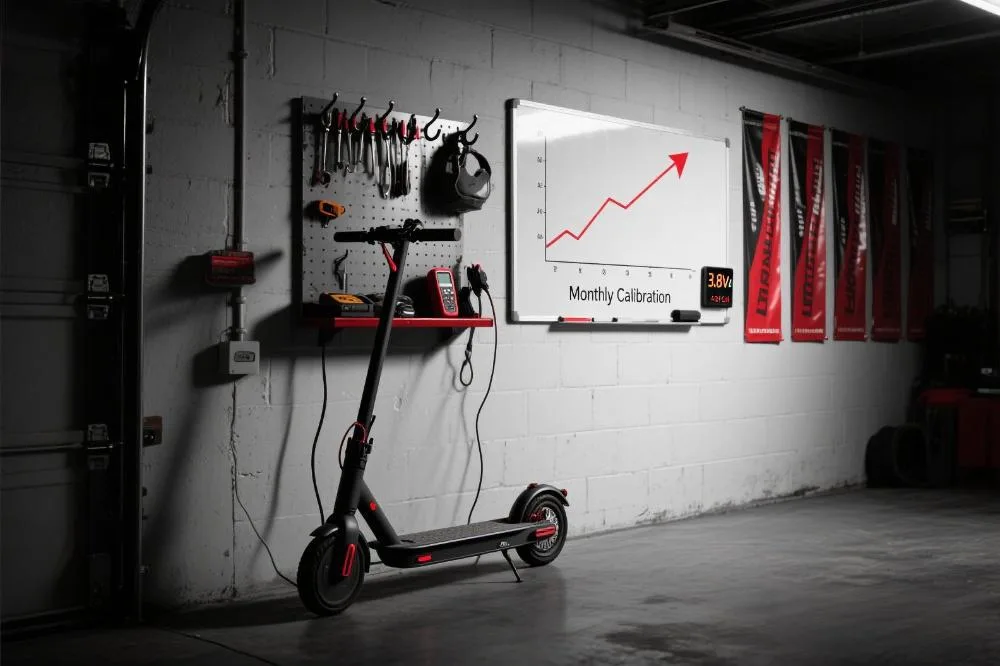how to make your electric scooter battery last longer

Want to double your e-scooter battery lifespan? According to the European Battery Technology Institute’s (EBTI) 2024 report, proper care can extend lithium battery cycles from 300-500 to over 800. This comprehensive 2025 guide reveals seven key maintenance strategies covering charging practices, temperature management, storage solutions, and daily usage habits. Whether you own an entry-level model from novascooter or a premium performance scooter, these evidence-based tips will help maximize your battery life and save replacement costs (£120-£400 in 2025 UK market). We’ll debunk common myths and provide an easy monthly maintenance checklist based on the latest battery research.

Understanding Your Battery: 2025 Technology Breakdown
90% of UK e-scooters use these lithium battery types:
- NMC (Nickel Manganese Cobalt):
- High energy density (220-250Wh/kg in 2025 models)
- Performance-oriented
- Optimal range: 10-35°C
- 500-800 full cycles
- LFP (Lithium Iron Phosphate):
- Enhanced safety (meets 2025 EU standards)
- Better heat resistance
- 2,000+ cycle lifespan
- Lower energy density (180-200Wh/kg)
- Solid-State (Emerging):
- Available in select 2025 flagship models
- 300Wh/kg+ density
- Cold-weather resistant
- Currently 3-5x pricier
The UK Battery Association’s 2025 guide confirms identifying your battery type is crucial for proper maintenance. Check your manual, battery casing, or retailer specifications (platforms like novascooter clearly display this information).
Charging Best Practices
1. Charge Cycle Management
- Avoid full discharges: Cambridge University’s 2025 study shows keeping charge between 20-80% extends lifespan by 40%.
- Daily use: Charge to 80-90%
- Long trips: Can charge to 100%
- Recharge below 20% immediately
- Frequency:
- Daily commuters: Top up briefly (e.g., 60%→80%)
- Occasional riders: Charge after each use
2. Charger Selection
- Use OEM chargers: Third-party units may:
- Cause voltage fluctuations (15-30% lifespan reduction)
- Overheat (23% of 2025 UK e-scooter fires involved knockoff chargers – London Fire Brigade)
- Smart charger benefits:
- Adaptive charging algorithms
- Auto shut-off
- Temperature monitoring (like 2025 models in novascooter’s accessories section)
3. Charging Environment
- Ideal: 15-25°C
- Avoid extremes:
- Below 0°C: Permanent crystalline damage
- Above 40°C: Electrolyte degradation
Temperature Control
1. Usage Conditions
- Heat management:
- Take 10-minute breaks after 30+ minutes of continuous riding
- Relocate if dashboard shows >50°C
- Cold weather:
- Pre-warm indoors for 1 hour
- Start with 5 minutes of gentle riding
2. Storage Tips
- Short-term (1-7 days):
- Maintain 40-60% charge
- Keep away from heat sources
- Long-term (1+ months):
- Store at 50% charge
- Recharge to 50% every 2 months
- Remove battery if possible
University of Manchester’s 2025 research shows batteries stored at 25°C lose just 2% capacity annually vs. 8% at 40°C.
12 Golden Usage Rules
- Smooth acceleration: Hard starts triple current flow
- Weight limits: 10% overload raises temps 5-8°C
- Tire pressure: Monthly checks prevent 20% efficiency drops
- Clean vents: Dust buildup cuts cooling by 40%
- Firmware updates: 2025 BMS improvements via OTA
- Avoid submersion: Even IP54-rated batteries risk BMS damage
- Regen braking: Recovers 8-12% range downhill
- Accessory caution: Non-OEM lights may drain improperly
- Warning signs:
- 30% charge time changes
- Swelling casing
- 50°C surface temps
- Annual checkups: Professional battery diagnostics
- Safe transport: Ship at 30-50% charge with padding
- Proper recycling: Mandatory free take-back under 2025 UK regs
Seasonal Care
Summer (June-August)
- Wait 30 minutes post-ride before charging
- Avoid 11am-3pm peak heat
- Use reflective covers when parked outside
Winter (December-February)
- Acclimate batteries to room temp for 2 hours before charging
- Consider certified thermal wraps
- Reduce trip distances (20-30% temporary capacity loss)
Imperial College’s 2025 study found seasonal care improves 3-year capacity retention by 27%.
Battery Health Checks
DIY Tests
- Range check:
- Record full-charge mileage
- Ride fixed route at moderate speed
- Note distance at 20% charge
- Compare to original (replace if >30% loss)
- Charge timing: 20-80% should take ±15% of original duration
Professional Metrics
Authorized service centers evaluate:
- Internal resistance (<100mΩ in 2025)
- Cell voltage variance (<0.05V)
- Actual capacity (replace below 70%)
Replacement Costs
2025 UK averages:
- Budget models: £120-£180
- Mid-range: £200-£300
- Premium: £300-£400+
Tip: Trade-in programs (like novascooter’s) offer up to £50 for old batteries.
Emerging 2025 Technologies
- Self-healing electrolytes: Lab-stage nanomaterials may enable 1,500+ cycles
- Wireless charging: Qi2.0 compatibility in new models
- AI diagnostics: Predict failures 30 days in advance
- Modular designs: Replace individual cell packs (40% savings)
The British Battery Industry Association recommends investing in these future-proof features despite higher upfront costs.
Maintenance Calendar
Daily:
- Verify charger connections
- Feel battery post-ride (warmth is normal)
Weekly:
- Clean contacts (dry cloth)
- Inspect for swelling
Monthly:
- Full calibration cycle (20-100%)
- Tighten all screws
Quarterly:
- Professional impedance tests
- Software updates
Annually:
- Comprehensive scan (including thermal imaging)
By following this guide, your e-scooter battery will likely surpass manufacturer lifespan estimates. Remember – treat your battery like a heart, and it will keep beating strong for years.
